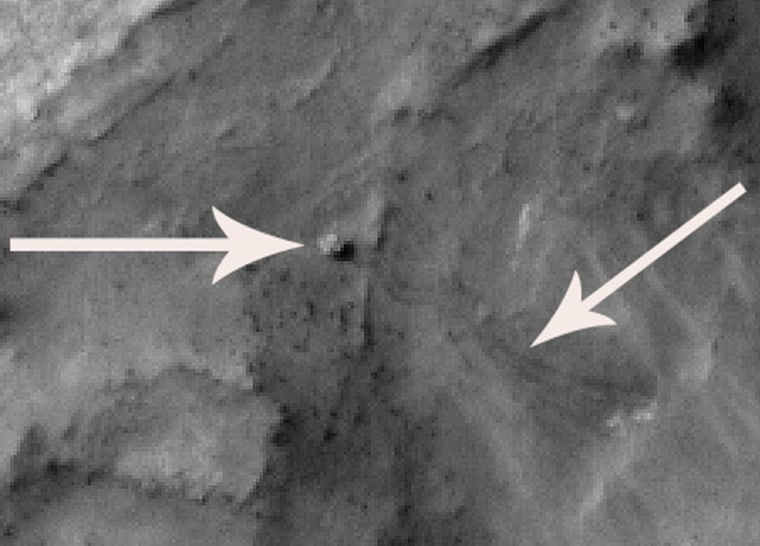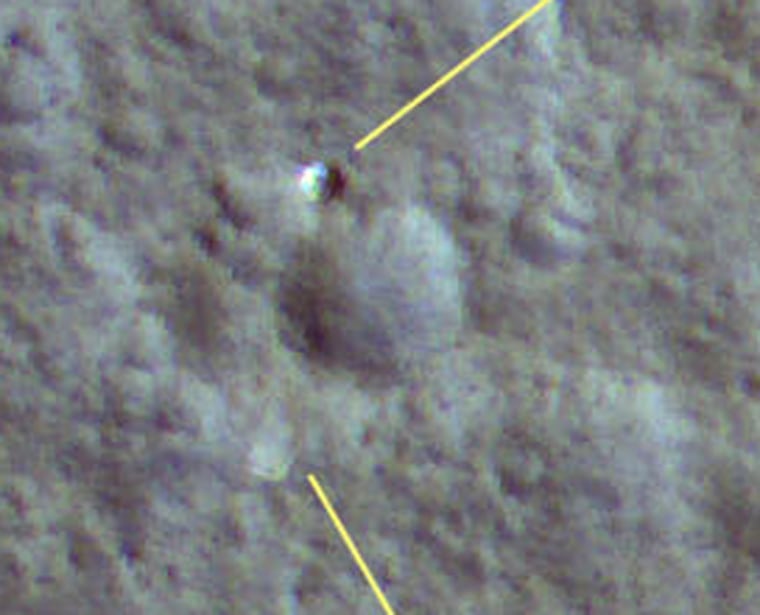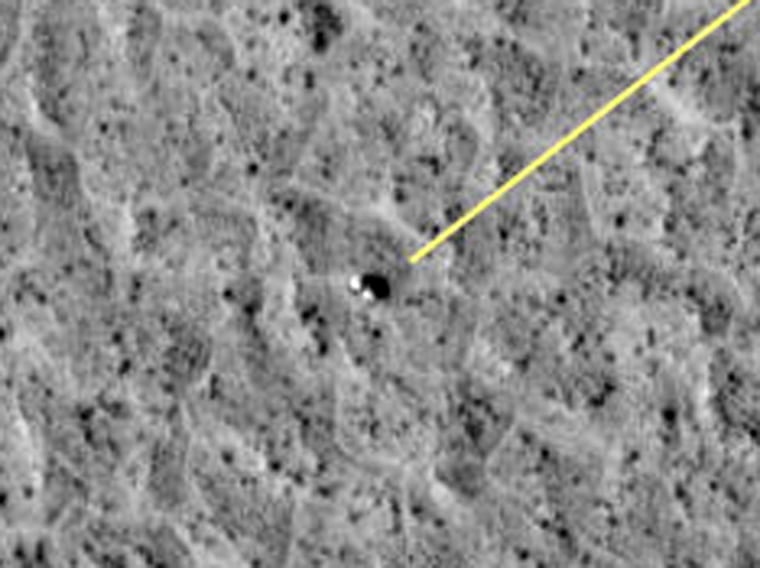The newest spacecraft orbiting Mars has taken pictures of four NASA probes used in previous missions to the Red Planet — the Spirit and Opportunity rovers that landed on the surface in 2004 as well as the two Viking landers that set down in 1976.
NASA's Mars Reconnaissance Orbiter, circling the planet since March, took images that show Spirit and Opportunity, the Viking landers and associated equipment as pinpoints or blobs against the surface.
The images were released Monday by NASA's Jet Propulsion Laboratory.
"We know these sites well at ground level through the eyes of the cameras on Spirit and the Viking landers," Alfred McEwen of the University of Arizona at Tucson, principal investigator for the High Resolution Imaging Science Experiment camera on Mars Reconnaissance Orbiter, said in a news release.
"Applying that knowledge as we view the new orbital images will help us interpret what we see in orbital images from other parts of Mars never seen from ground level," he said.
The photo of Spirit, which shows the tracks of the rover as well as the robot itself, is already being used to plan the mission's daily activities. Other images show Spirit's landing platform as well as its back shell and heat shield, some distance away.
The orbiter previously used its high-resolution camera to photograph Spirit's twin, Opportunity, at the edge of a crater on the other side of the planet — as well as Opportunity's landing site in Eagle Crater.

Freshly released images track Opportunity as it makes its way around the half-mile-wide (750-meter-wide) Victoria Crater.
The Viking 1 scene includes the heat shield and back shell, both of which were jettisoned during descent and fell hundreds of feet away from the lander.
"The biggest surprise is that you can still see what appears to be the parachute after 30 years," said JPL's Tim Parker, whose calculations helped determine where to point the orbital camera for seeing the Viking landers.

Parker has identified some of the individual nicknamed rocks in the Viking-site images that are prominent in famous photographs taken by the landers, such as "Ankylosaurus," a rough rock about 3 feet (a meter) long near Viking Lander 2, and the larger "Big Joe" near Viking Lander 1.
Spirit and Viking 1 had previously been detected in pictures taken by NASA's Mars Global Surveyor spacecraft, which recently went silent after years in orbit.
Images of Viking 2, which also showed its back shell a quarter-mile away, are a priority of the new orbiter's powerful camera.

NASA is evaluating landing sites for the Phoenix Mars Lander, which will be launched next summer and is intended to land at a far northern site. Viking 2 is not located at as high a latitude as where Phoenix will go, but its site is the most comparable of any seen from the surface of Mars, JPL said.
"The Viking Lander 2 site, with its combination of lander-based and orbiter-based imaging, gives us an important anchor for evaluating the ground roughness and boulder densities at sites where we have only orbital imaging," said Ray Arvidson of Washington University in St. Louis, chairman of the Phoenix landing site working group.
This report includes information from The Associated Press, NASA and MSNBC.com.